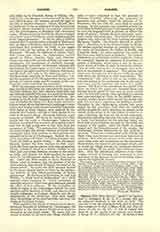

Carmel (Heb. KRML, Karmel, “garden” or “garden-land”), designates in the O. T. a certain city and its adjacent territory in the tribe of Juda. The city was in the hill country of Juda, and its territory was contiguous to that of Maon, Ziph, and Jota (cf. Josue, xii, 22; xv, 20, 55). It was in Carmel that Saul set up the trophy of his victory over Amalec [I Kings (A. V., I Samuel), xv; 12]. As Nabal, a man of Maon, was shearing his sheep in the pastureland of Carmel, there occurred between him and David, then a fugitive from the anger of Saul, the episode in which Abigail, Nabal’s wife, played so conspicuous a part (I Kings, xxv, 2, 5, 7, 40). It was apparently in Carmel of Juda that King Osias, son of Amasias, had arable lands and vineyards [II Paralipomenon (A. V., 1I Chronicles), xxvi, 10]. These simple Biblical data enable us to understand why this city and its district were actually called “Carmel”; in contrast to the wilderness a little farther to the south and to the east, the region appeared like a “garden” to the Hebrews of old, and the city naturally derived its name from that of the adjacent territory. In the fourth century of our era St. Jerome describes the town of Carmel as a village with a Roman garrison and speaks of the district as a mountain. In the time of the Crusades, the city was held by King Amalrich against Saladin, and then passed into oblivion till the nineteenth century, when it was recognized by travellers under the name of Kurmul. The place is now utterly desolate, but its ruins—conspicuous among which are three churches and a strong castle with bevelled stones—indicate a town of considerable extent and importance. The ruins of the town are about ten miles S.E. of Hebron, and close to those of Maon.
FRANCIS E. GIGOT

